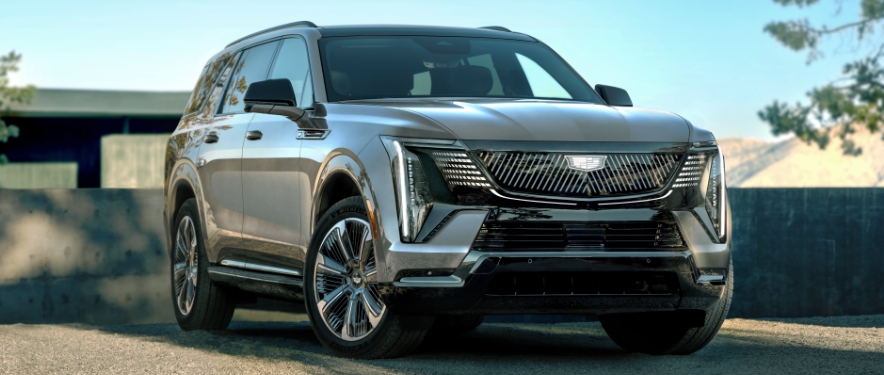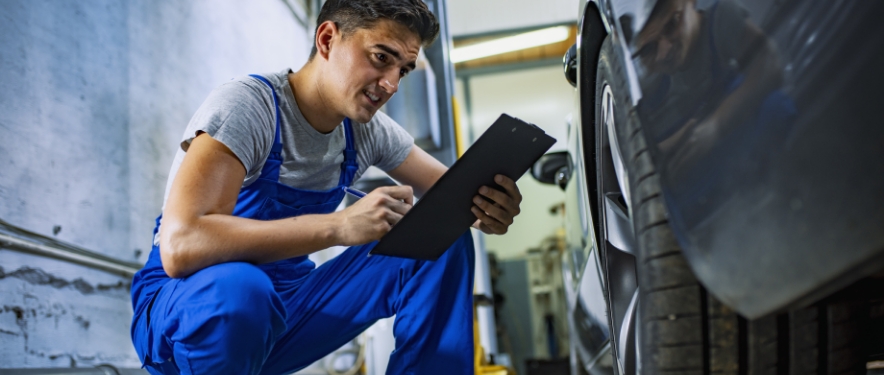- Home
- Financial Resources
- Financial Articles
- Get a Grip on Tire Care

Get a Grip on Tire Care
By Nicole Mayer / 10/10/2023 / Your Car
You throw everything you need for work in the car, climb into the driver’s seat and put the key in the ignition. Just as you’re about to pull out, you notice an aggravating little light on the dashboard: Your tire pressure is low.
While it can be tempting to just ignore that warning, it’s important to keep your tires in top shape to ensure the smoothest and safest ride. You want to do your PART to make the roads safe, so you turn off the car and check the condition of your tires..
Tire health indicators
- Pressure. With the right pressure, you’ll have better vehicle handling, a smoother ride and increased fuel economy. Underinflation could lead to a blowout, and overinflation could lead to increased wear and ride discomfort. Your owner’s manual and the sticker inside the driver’s door specify the appropriate pressure in pounds per square inch (PSI). Inflate tires to the recommended PSI by going to the dealership or using the air pump at the gas station. Tires tend to deflate in cooler weather conditions, so increasing your awareness and checking your tire pressure regularly can help you stay safe. You can get free monthly OnStar® diagnostic reports, which include tire pressure readings, with your OnStar-equipped GM vehicle.
- All-around condition. When in good overall condition, there are no tears, cuts, bulges, cracks or items stuck in the rubber. It also means there are no irregular wear patterns like striped bands, worn edges or wear only in the center. Remember, you should only use a spare in case of emergencies and get a new tire as soon as possible.
- Rims. Scraped, bent or split rims can cause damage to your tires, potentially leading to a blowout, and can cause mechanical problems with the control of your vehicle. Vibrations in your steering wheel or seat may indicate rim damage. That’s when you want to have service experts at the dealership take a look to ensure safe vehicle operation.
- Tread. Having healthy tread means you have a better grip on the road, can stop faster and are less likely to slip or hydroplane in the rain. The GM Certified Service experts recommend replacing tires with 2/32 inch or less of tread remaining. The Penny Test can help you determine if it’s time to replace your tires. If the tire cord, or fabric, is showing through the rubber, it also means you need new ones. Note: When you turn in your GM Financial leased vehicle, there must be 4/32 of an inch or more of tread remaining.
Nailed it!
As you circle your vehicle to determine the source of your indicator light, you discover a nail in one of your tires. While you’re at it, you check the other tires to see the tread you have remaining. It looks pretty low, and you can see most of Lincoln’s head when you do the penny test. Thinking proactively, you decide you should replace all your tires. After all, having new tires means better tread and more protection from punctures.
Since you didn’t have time to put on a spare and make it to work on time, you called a ride share and dedicated your lunch hour to finding a solution. You discover that it’s important to replace your tires with the same size, load rating and speed rating specified for your vehicle.
Shoe shopping
Sometimes referred to as shoes for your car, tires can often be selected online with the help of a tire finder on many dealership websites. The information you need can also be found in your owner’s manual and the sticker inside the driver’s door. You can check your tire sidewalls (see example below) to make sure you have the right shoes for your vehicle.
Example sidewall: P185/60R14 82H
- Size. The wheel diameter tells you how big of a wheel the tire can fit on and is shown as the last number in the connected sequence. In the example, the wheel size is 14 inches in diameter. The tire can only fit on this size wheel.
- Load Rating Index. Passenger cars and light-duty trucks have load ratings that range from 72 to 120, which indicate how much weight your tires can hold. It’s usually the last set of numbers followed by a letter on your sidewall, which is 82 in our example above. The higher the rating, the more it can carry. It’s acceptable to purchase replacement tires with a higher load rating index.
- Speed Rating Symbol. This letter indicates the speed your tire can safely maintain. It’s the last letter on your sidewall, which is H in our example. According to the speed rating symbol chart, this tire can safely operate up to 130 miles per hour, not that anyone should travel that fast on the road or expressway. Getting replacement tires with a higher speed rating is acceptable.
Gaining traction
Before you replace your tire with a spare and carefully drive to the dealership, you gather the information you found over lunch and consider what type of tires to buy. Different times of the year may call for different rubber, depending on where you live. Tire makers use different combinations of rubber composite, tread patterns and tread depth to provide options for the best possible performance.
Seasonal tire differences
- Summer Tires. Similar to performance tires, summer tires are designed with a softer rubber and large tread blocks to give solid contact with hot ground. But when temperatures drop, the soft rubber hardens and loses traction. These tires are recommended for warm weather and advised against during the cooler winter months. Always check your tires as part of your summer maintenance regimen.
- Winter Tires. These are constructed with deeper tread patterns to flush out sludge and slush, along with zigzag cuts in the tread, called sipes, that help pack snow. The rubber is specially engineered to withstand cold temperatures and wet roads and keep their handling. If you frequently need to drive in snow and ice, consider getting winter tires as part of your routine to prepare your vehicle for winter. Tip: You should always store tires in a cool, clean, dry area away from direct sunlight to minimize aging.
- All-Season Tires. Many vehicles on the lot come equipped with all-season tires because they work well in many driving conditions. They use a combination of rubber compounds and tread configurations to perform good in most weather and on most road surfaces.
At the end of the day, your tires can have a big impact on the safe operation of your vehicle. When the rubber meets the road … well, just make sure they’re in the best condition possible, so you can roll on with confidence.
By Nicole Mayer, GM Financial
Nicole Mayer is a whisk-taker with a fondness for desserts. From baking to organizing, she’s motivated by trying new things and sharing her knowledge. When she’s not in the kitchen rocking out to ‘80s music, you’ll find her serving up aces on the tennis court.
Related Articles

Test-driving a car: What to look for before you buy
Discover five questions to ask yourself during a test drive to help you make the right choice for your next vehicle.
GET ANSWERS
What Is a Lease-End Inspection and Why Do You Need One?
Explore the top three reasons you should take advantage of a free lease-end inspection and learn how to conveniently schedule one.
FIND OUT